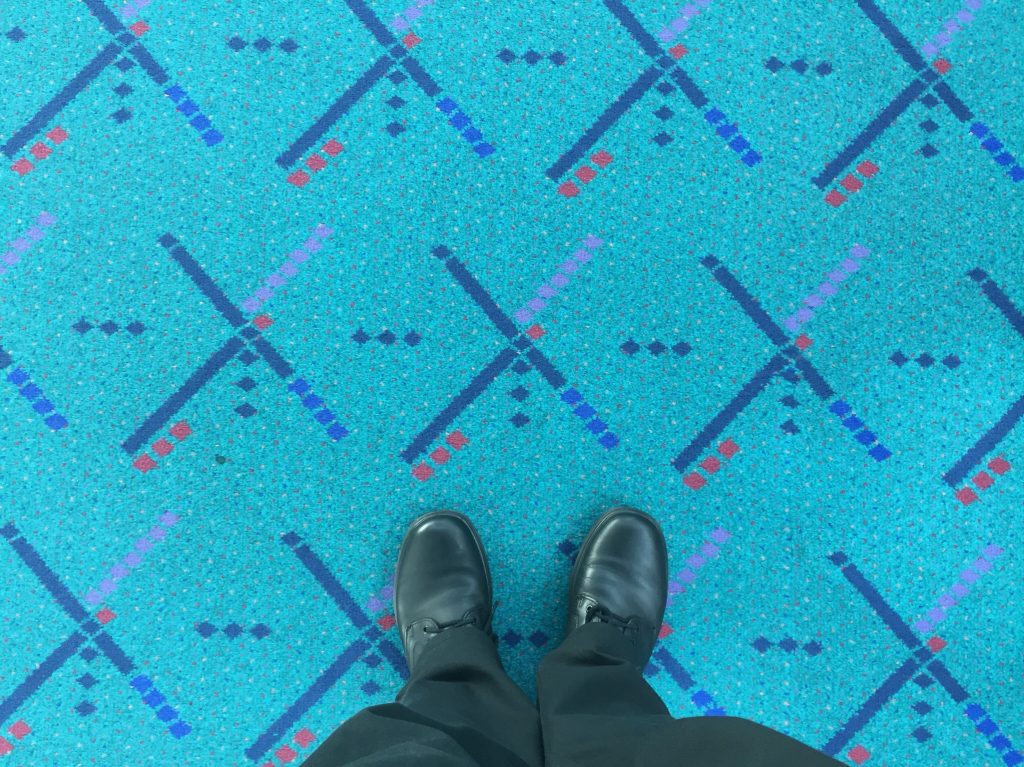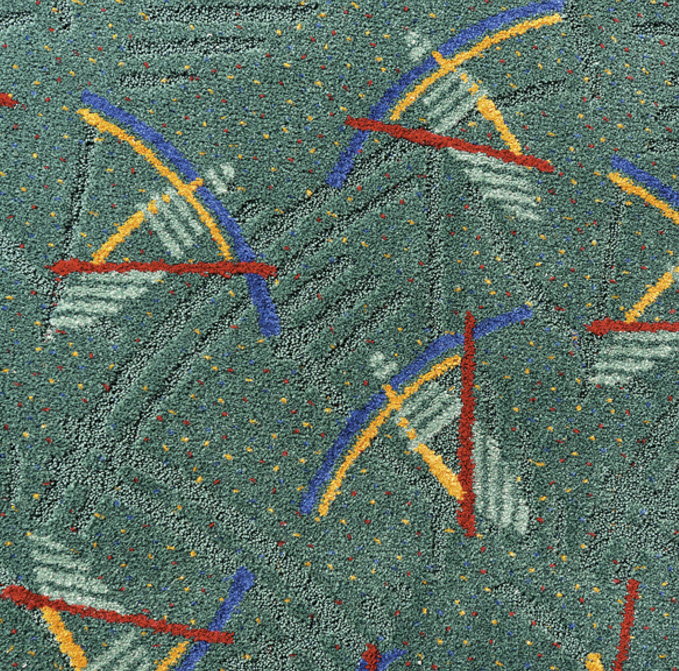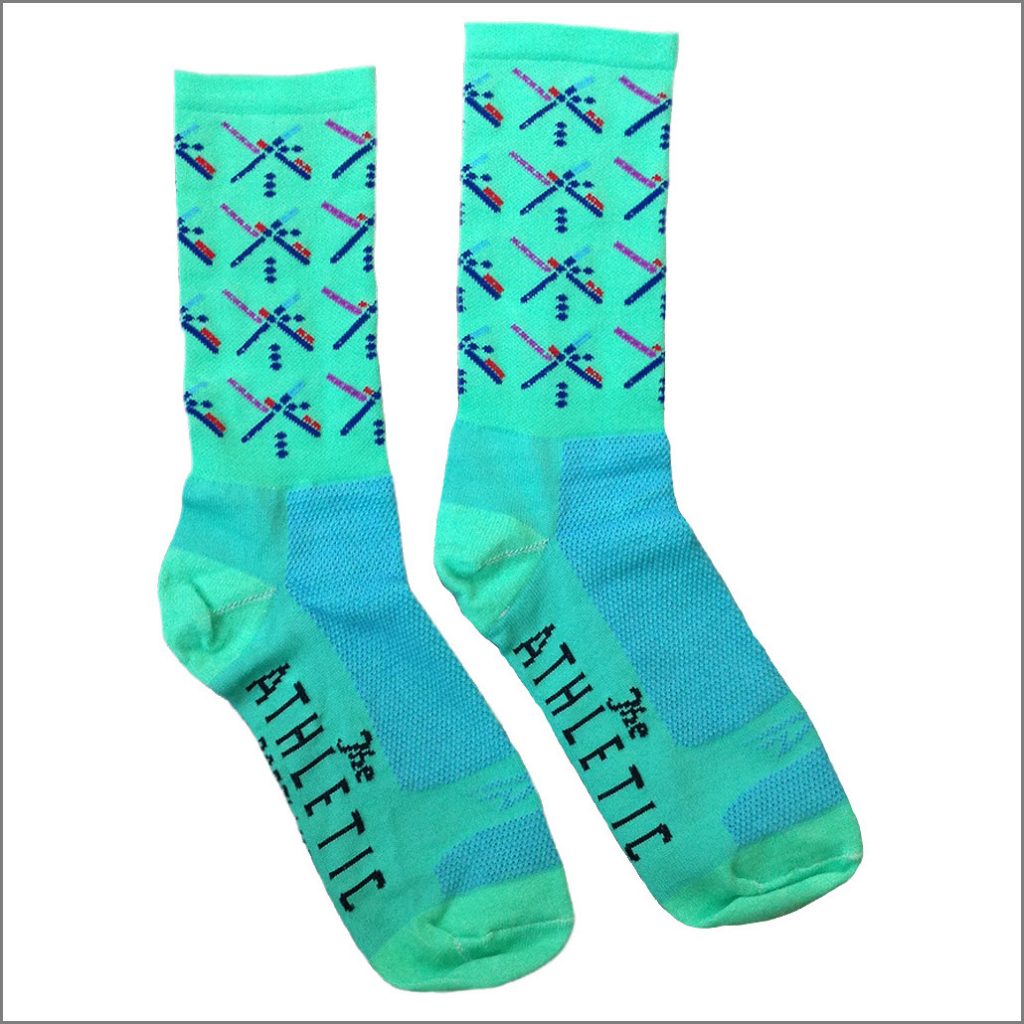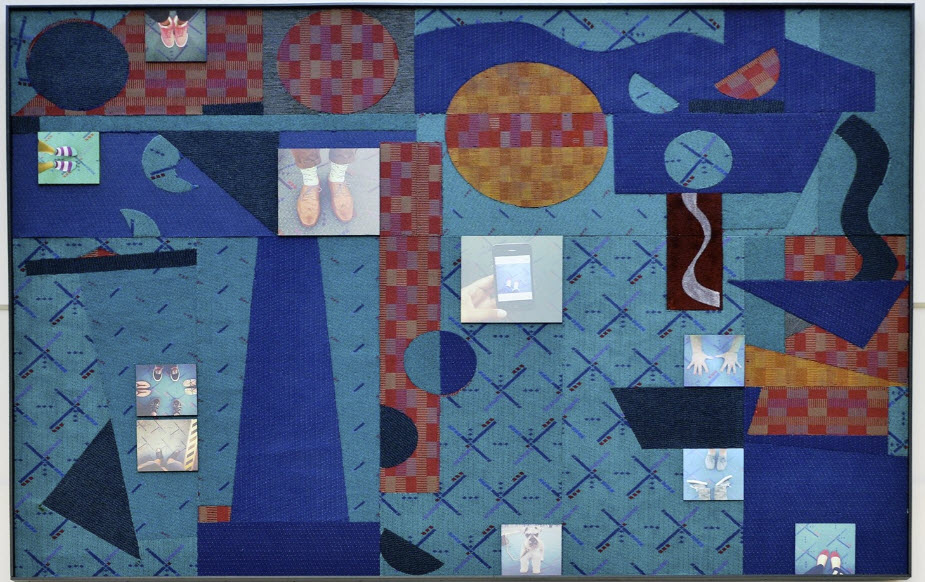Written for the Airline Passenger Experience Association
APEX Experience Magazine – December 2014/January 2015
You just never know how it’s going to turn out when you open yourself up to the universe. Especially if the center of your universe happens to be Portland. The one in Oregon, on the U.S. West Coast, famous for food trucks, hipsters, roses, museums, rampant creativity, and its “Keep Portland Weird” sign. A city that’s lovingly satirized by the absurdly witty TV show Portlandia. A very different place.
Right, the universe. Well, just like those of us who have lived in our homes for more than 20 years, the good folks at Portland International Airport (PDX) and the Port of Portland decided it was time to replace the carpet in their terminals. Thanks to a great maintenance program and original design specifications, the carpet had far exceeded its lifetime and was simply wearing out.
Back in the 1980s, when it was designed and installed, the carpet’s unique pattern became embedded in Portland’s culture. That original design had a teal background and an abstract representation of the airport’s runways and aircraft, inspired by what might be seen on an air traffic controller’s radar screen or from the control tower itself. And while the team at PDX knew that the pattern was beloved by the countless travelers passing through the airport, the decision was nevertheless made to update the color and design of the carpet.
PDX wanted to be certain that they had the time to ensure the project’s success, so the process actually started back in 2009. A Portland firm, ZGF Architects, was brought in to update the original design created by SRG Partnership in the late 1980s. In 2012, Hennebery Eddy Architects, also Portland-based, joined the project to help develop the final product, including materials and construction support.
As described by the design team, the new carpet’s look is based on “organic and man-made shapes found within the surrounding areas of PDX, including airplane wings, runways, leaves, trails, and waterways.” The team selected “mood-enhancing colors … to elicit a calm and inviting environment.” Ommmm. How very Portland.
Once the new design was finalized, PDX told everyone what was going on. “We didn’t want anyone to be surprised. So we reached out to the community and updated them on the project,” says Annie Linstrom, spokeswoman for the airport.
And that’s when the universe started unfolding. Overnight, it seemed, social media began to discuss the project, and the old and new carpet designs. “The Carpet at Portland Airport” community page sprang up on Facebook and has over 9,000 Likes. It honors “the amazing carpet that tells you that you’re home in Portland.” There’s an Instagram hashtag, pretty well filled with photos of people’s feet on the carpet. Both the old and new designs have Twitter accounts, and there’s an iPhone wallpaper app.
Then it really exploded. First, the pattern showed up on socks. That was followed by T-shirts, coasters, water bottles, mugs, cell-phone cases, men’s neckties, infinity scarves, bike shirts, art prints, pillows, beer-can holders, hats, bike helmets, and… fridge magnets. Most of the items were created by people “out there,” without the official sanction of PDX.
The Made in Oregon stores saw that something was happening and added a few of the items to their stock of “All Things Oregon.” “We were taken by surprise at the response. We had no clue that somebody would buy something that resembles a carpet pattern,” says Candace Vincent, the company’s general manager. “People came in asking for the items, and not just at our [PDX] airport store. It seems to be particularly popular with our younger customers – teens, and high school and college kids,” she added. Popular, indeed. The stores have sold over $65,000 of carpet-pattern merchandise, according to Vincent.
In 2013, carpet testing began. Robin McCaffrey, PDX’s engineering project manager for the Carpet Replacement Project, explains, “We worked with a number of manufacturers and gave them the performance requirements, including stain, delamination and wear-resistance, and esthetics. They produced carpet samples that met those requirements. It’s definitely not something that you’ll ever find in a catalog.”
A portion of the old carpet was torn up in PDX’s Oregon Market area of restaurants and shops, and samples from three carpet manufacturers were installed for over six months. Travelers, visitors, airline personnel and airport tenants were all asked to walk on the test carpeting and comment on the samples.
At the same time, the samples were being tortured at Professional Testing Labs, located in the world’s carpet epicenter of Dalton, Georgia. Lab director Lee Phillips explains that “we’ve studied airport traffic, and it can be very different from other commercial-carpet installations. While the foot traffic isn’t very harsh, luggage wheels can put hundreds of pounds of pressure per square inch – PSI – on the carpet.” Among the dozens of ISO and ASTM tests, weighted office chairs were used to simulate rolling luggage and, yes, professional contract walkers abused the carpet on a track.
To test stain-resistance and cleaning, a disturbingly wide range of items were dumped on the samples. “Coffee, mustard, Betadine, and cherry Kool-Aid were among the things tested,” says McCaffrey. “Mustard was one of the hardest things to get out.” However, APEX Experience could not confirm that the samples were tested for resistance to a quintessentially Portland stain combination – spilled chai latte and dark-chocolate mocha drinks, mixed with a ground-in bacon-maple bar from Portland’s Voodoo Doughnuts!
Ultimately, carpet was selected from J+J Invision – not surprisingly, also in Dalton, Georgia and Mohawk Industries in Calhourn, Georgia. “What we ended up with is similar to, but not exactly the same as, what we tested, because the testing helped tell us what we needed to tweak,” says McCaffrey. “It’s a broadloom tufted cut-pile carpet with a relief pattern; some of it is cut and some is looped, because that mixture has a good esthetic and it doesn’t show wear as much.” Sixty-three-thousand square yards of carpet will be laid in the project, budgeted at $12.24 million, and much of the work will be done at night to minimize the impact on the airport’s 24-hour-a-day operations. It is expected to be completed before the Thanksgiving 2015 travel crush.
The airport is proud of its award-winning record of environmental stewardship, which will extend to this project and the disposal of the old carpet. “Our goal is to recycle all of it, and to keep it out of the landfill at any cost,” says PDX’s Linstrom.
Linstrom says the airport continues to pay tribute to the old carpet with an abstract exhibit by Nancy Wilkins, a Portland printmaker, which is on display in the terminal through to the end of the project. PDX is also thinking about other unique ways to feature the old carpet.
But will the new carpet pattern ever reach the cult status of the old one? Made in Oregon’s Vincent thinks so. “We have to be ready for it!”
And so she should be, or the universe might be upset. After all, it is Portland.
Read the original story in APEX Experience Magazine – December 2014/January 2015 Issue



